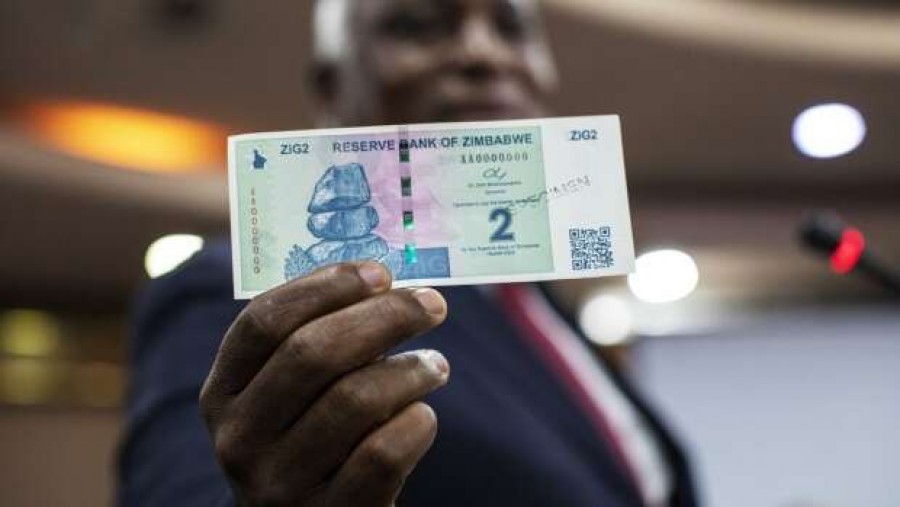Zimbabwe’s latest attempt to introduce a new currency is coming undone, just five months after initially being praised for taming an inflation spiral and exchange-rate volatility.
Central bank Governor John Mushayavanhu is being left to deal with the fallout in a nation which has faced multiple currency crises before. It is the veteran banker’s first reckoning of the market upheaval that was all too familiar among his predecessors.
Since Aug. 28 the ZiG, short for Zimbabwe Gold, has lost value against the US dollar for 20 straight trading days. It sells for 26 per dollar on the parallel market, a 50% discount to the official rate, stoking price distortions in the economy.
The governor is having to deal with the reality that without fixing the underlying factors plaguing the ZiG, there’s limited hope for the new currency, said Lyle Begbie, an economist at Oxford Economics.
They include current account and fiscal pressures that have worsened due to an increase in food imports because of an El Niño-induced drought and lower commodity prices, which have led to reduced dollar inflows into the mineral-rich nation, and the lack of access to international capital markets.
“Without sufficient foreign reserves, export growth, or sustained capital inflow the creation of a new currency does not simply magic up stability,” said Hasnain Malik, emerging market equity strategist at Tellimer in Dubai.“The most recent bout of pressure should not be a surprise.”
Added to those pressures any Zimbabwean central bank governor will always have “limited credibility to start with” and regaining confidence will take time after “numerous failed monetary experiments,” Begbie said.
The nation’s previous currency the Zimbabwean dollar lost value against the US currency every day this year and depreciated 80% before it was abandoned. The cash-strapped government also resorted to printing more of the local unit to fund the budget contributing to its weakness.
Temporary Shock
Still, Mushayavanhu is hopeful the latest currency turmoil will be short-lived.
In recent post on X the central bank called it a “temporary shock.” The comment was followed by an opinion piece published in state media on Sept. 22, in which the governor blamed the currency issues on “supply and demand mismatches caused by timing differences in the realization of foreign-exchange inflows and outflows.”
He also said the central bank, which has injected $64 million so far this month into the foreign exchange market, is considering other measures to support the local unit. They include a tight monetary policy and using the country’s reserves if there are severe market disruptions that threaten economic stability. The central bank is set to announce its latest rate decision later this week.
The Bankers Association of Zimbabwe is also working with the central bank to improve the situation. Lenders’ plan to be “more consistent in supplying the interbank market with enough forex to meet bona-fide invoices going forward,” the lobby’s President Lawrence Nyazema said.
The $64 million released by the central bank has covered most transactions that were in the pipeline, Nyazema said. “This should ensure the provision of goods and services in ZiG at reasonable prices hence improving confidence in the currency.”
source: norvan report
